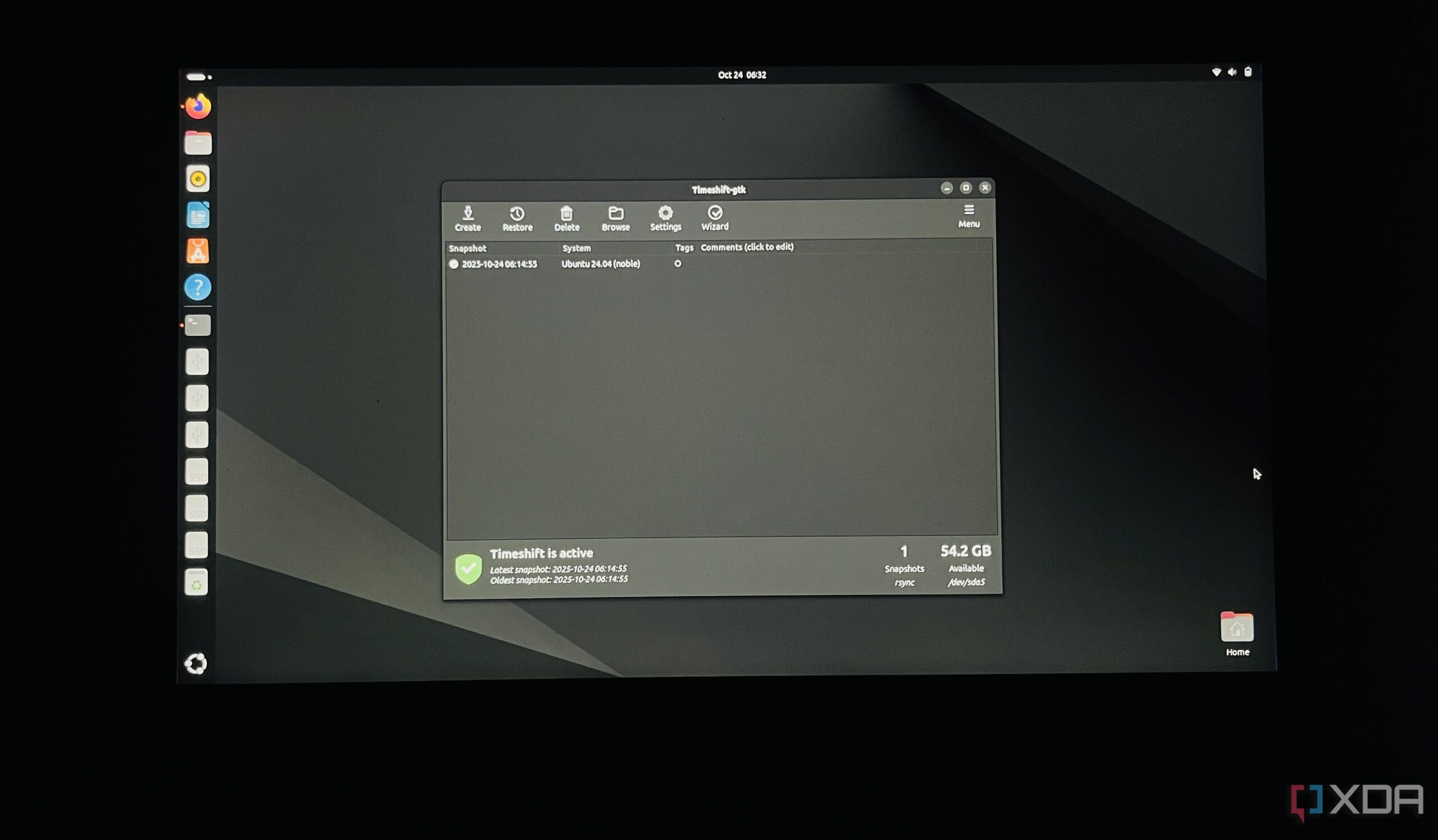Top Stories
Urgent: Free Tool Timeshift Brings Mac-Like Backup to Linux Now

UPDATE: A revolutionary tool called Timeshift has just been launched, bringing a Mac-like system restore feature to Linux users worldwide. This free, open-source software enables users to create system snapshots, allowing for quick recovery in case of system failures.
For many Linux enthusiasts who frequently experiment with new kernels or system updates, this tool is a game changer. Timeshift acts much like the well-known Time Machine on macOS, providing a safety net that many Linux distributions, including Ubuntu, Linux Mint, and Debian, have lacked until now.
Why This Matters: With Timeshift, Linux users can now confidently explore new features and updates without the fear of permanently damaging their systems. It is particularly beneficial for those who are new to Linux or for power users who frequently tweak their configurations.
How Timeshift Works: The installation process is straightforward and can be completed with a single command in the terminal. Users need to ensure their system meets specific prerequisites, such as installing certain development libraries. Once installed, the setup process is accessible, allowing users to choose between two snapshot methods: RSYNC for individual file copies or BTRFS for filesystem-level snapshots.
To set up Timeshift, users can simply launch it from the application menu or via the terminal using the command sudo timeshift-gtk. They will be prompted to select their preferred snapshot type and location, after which they can schedule automatic snapshots—ranging from hourly to monthly.
This tool focuses specifically on system-level files, meaning users can rest assured their personal files remain untouched during the backup process. This unique feature not only streamlines system recovery tasks but also enhances overall efficiency.
Features That Stand Out: Timeshift offers several compelling features, including:
– **Automatic Snapshots:** Users can set Timeshift to create snapshots in the background based on their chosen schedule.
– **Incremental Backups:** Instead of duplicating the entire system, Timeshift backs up only the files that have changed, saving storage space and time.
– **Cross-Distribution Restore:** Users can easily switch between different Linux distributions and restore previous states without complications.
However, potential users should note some limitations. Timeshift does not back up personal files by default, and users need to monitor storage usage as snapshots can accumulate over time. Additionally, those using BTRFS may find the tool’s rigidity a drawback.
Who Should Use Timeshift: Whether you’re a novice or a seasoned Linux user, Timeshift is an invaluable tool that empowers users to explore Linux without fear. It is especially beneficial for those testing unstable packages or making system-level changes.
As the Linux community embraces Timeshift, users are encouraged to download and install this essential tool immediately. The next time your system confronts an error or instability, having Timeshift ready could save you from hours of frustration.
For Linux users, the urgency to install Timeshift cannot be overstated—take control of your system stability today!
-

 Politics2 weeks ago
Politics2 weeks agoDallin H. Oaks Assumes Leadership of Latter-day Saints Church
-

 Sports2 weeks ago
Sports2 weeks agoSteve Kerr Supports Jonathan Kuminga After Ejection in Preseason Game
-

 Business2 weeks ago
Business2 weeks agoTyler Technologies Set to Reveal Q3 2025 Earnings on October 22
-

 Lifestyle2 weeks ago
Lifestyle2 weeks agoDua Lipa Celebrates Passing GCSE Spanish During World Tour
-

 World2 weeks ago
World2 weeks agoD’Angelo, Iconic R&B Singer, Dies at 51 After Cancer Battle
-

 Entertainment2 weeks ago
Entertainment2 weeks agoZoe Saldana Advocates for James Cameron’s Avatar Documentary
-

 Science2 weeks ago
Science2 weeks agoChicago’s Viral ‘Rat Hole’ Likely Created by Squirrel, Study Reveals
-

 Lifestyle2 weeks ago
Lifestyle2 weeks agoKelsea Ballerini Launches ‘Burn the Baggage’ Candle with Ranger Station
-

 Health2 weeks ago
Health2 weeks agoRichard Feldman Urges Ban on Menthol in Cigarettes and Vapes
-

 Health2 weeks ago
Health2 weeks agoCommunity Unites for Seventh Annual Mental Health Awareness Walk
-

 Business2 weeks ago
Business2 weeks agoMLB Qualifying Offer Jumps to $22.02 Million for 2024
-

 Business2 weeks ago
Business2 weeks agoMega Millions Jackpot Reaches $600 Million Ahead of Drawings









